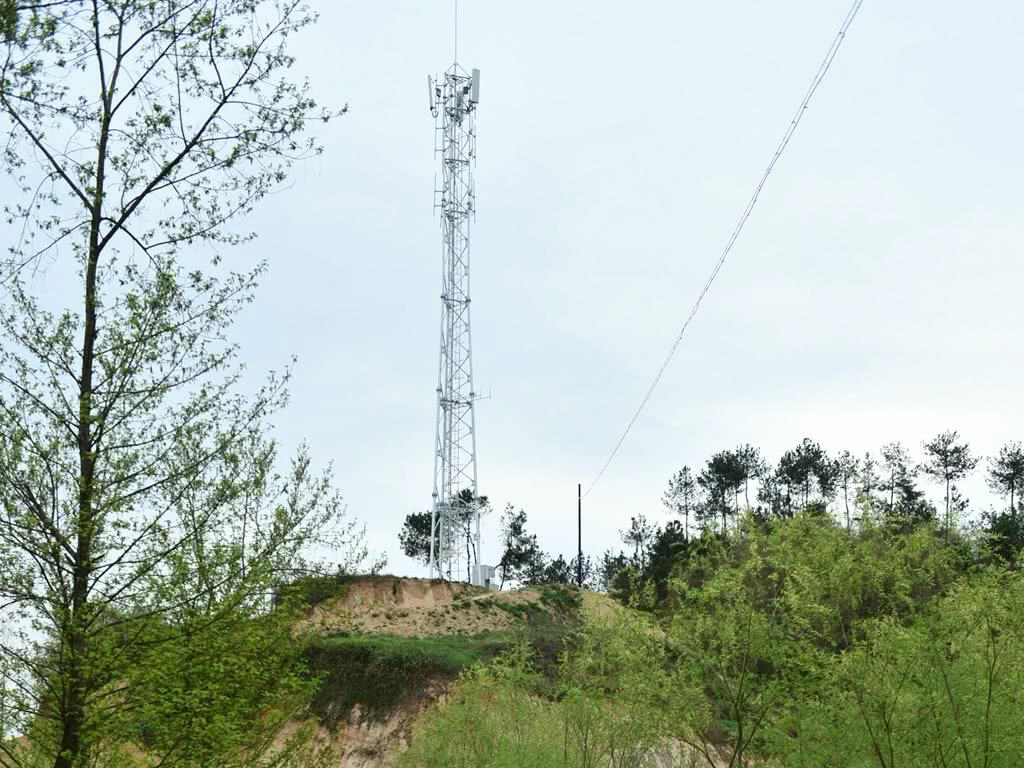Enhanced Network Performance Through Integrated BBU Solutions
Core Functions of the Baseband Unit in Signal Processing
Baseband Units (BBUs) are essentially the brains behind modern cellular networks, taking care of all the digital signal processing work, fixing errors, and managing how signals get modulated. When these functions are centralized through integrated BBUs, we see fewer pieces of redundant equipment lying around, plus better signal quality too. Some studies from the 2024 Wireless Infrastructure Report actually show improvements of about 35% over traditional distributed setups. What makes this so important? Well, when everything gets consolidated, it helps keep all those remote radio units (RRUs) working together in perfect sync. And let's face it, this kind of synchronization is absolutely necessary if we want 5G to work properly with those tricky millimeter wave frequencies.
Low Latency and High Throughput in 5G-Ready Networks
When integrated baseband units come into play, they cut down processing delays to under one millisecond, which makes those super reliable low latency connections possible. These connections are pretty much required for things like self-driving cars and remote medical procedures where timing matters a lot. Putting these systems in central locations helps manage how bandwidth gets distributed across different users, and tests have shown this can reach almost 98% efficiency in busy networks. Some real world testing done in crowded city centers actually demonstrated better than expected results too. The network capacity jumped by around 40% when engineers used next generation BBUs specifically designed to work with those big antenna arrays we call massive MIMO setups.
Case Study: Urban 5G Rollout Using Integrated BBU Solutions in Seoul
The 5G network across Seoul handles connections for roughly 10 million people using what's called centralized BBU architecture to keep track of those 15 thousand plus radio nodes scattered throughout the city. When they switched to these virtualized BBU pools, the telecom companies actually managed to cut down on their hardware expenses by about a quarter. And at the same time, they were able to push out maximum download speeds reaching around 2.5 gigabits per second. The real game changer came when they started getting data analysis straight from these BBU clusters. That allowed them to predict where traffic was going to get heavy before it even happened. As a result, there was a massive drop in network jams during rush times – somewhere around 60 percent according to the 2024 Global Smart City report. Cities all over the world are now looking at Seoul's approach as a blueprint for expanding their own 5G networks without breaking the bank.
Cost and Energy Efficiency of Centralized BBU Architectures
Centralized baseband unit (BBU) architectures enhance cost efficiency by consolidating processing resources across multiple radio units. Operators reduce operational expenditure (OpEx) through unified software updates and streamlined maintenance–each upgrade now servicing 20–50 remote radios simultaneously.
Reducing Operational Expenditure with BBU Consolidation
BBU consolidation lowers power consumption by 18–22%, according to 2023 data center efficiency benchmarks, by eliminating redundant cooling systems. Transitioning from decentralized to centralized BBU configurations reduces annual OpEx by $9,200 per typical 5G macro site.
How Integrated BBUs Lower Power Consumption and Hardware Costs
Advanced BBUs process each radio unit at 45W using optimized ASIC chipsets, down from 68W in prior generations. Shared power supplies and 48V DC distribution minimize energy waste, saving $4,800 annually per site compared to distributed setups.
Data Point: GSMA Report Indicates 30% Lower Energy Use with Centralized BBUs
A GSMA study confirms that centralized BBUs reduce network energy intensity by 30% (GSMA 2023). When 150 radio units are centralized into three BBU hubs, operators achieve monthly power savings of 800kW–equivalent to powering 230 homes annually.
Strategy: Implementing Cost-Efficient BBU Consolidation in Regional Networks
Network engineers maximize savings by deploying scalable BBU chassis that support incremental upgrades. A phased 36-month rollout across four regional hubs cuts upfront capital expenditure by 62% compared to full-network overhauls.
Scalability and Flexibility in Dynamic Network Environments
Modular BBU Design for On-Demand Capacity Expansion
Modular BBU architectures allow telecom operators to scale capacity precisely with demand. Hot-swappable components enable incremental upgrades without costly "forklift" replacements. A tier-2 carrier in Southeast Asia expanded its 5G coverage by 40% within six months using this approach, aligning infrastructure investment with subscriber growth.
Supporting IoT Growth with Scalable BBU Deployment: Case Study from Rural India
Across 150 villages in rural India, smaller baseband units got installed to handle about 220 thousand agricultural IoT sensors that track things like soil moisture levels and local weather patterns all while keeping signal delays under 50 milliseconds. What makes this approach interesting is how much money it saves compared to old school methods using big cell towers. We're talking around 60 percent less cash outlay at the start according to some research published last year in what they call the Modular Network Expansion Report about flexible infrastructure setups.
Cloud-RAN (C-RAN) Architecture and the Role of Centralized BBUs
C-RAN leverages centralized BBU pools to dynamically allocate processing resources across radio units. During the 2023 Mumbai Cricket World Cup, a major operator shifted 85% of its BBU capacity to stadium zones, delivering 2.3 Gbps peak speeds to 90,000 concurrent users. Centralization reduces resource redundancy to less than 10%, compared to 35–40% in decentralized systems.
Leveraging Virtualized and Software-Defined BBU Solutions for Elasticity
Virtualized BBU platforms achieve 92% of hardware-bound signal processing performance using GPU-accelerated containers. One European operator employs a software-defined system that adjusts resource allocation every 15 minutes, reducing energy use by 18% while maintaining 99.999% service availability–critical for enterprise-grade 5G slicing under fluctuating loads.
Enabling Advanced RAN Architectures: C-RAN and O-RAN Integration
BBU’s Role in Interoperability and Open RAN Ecosystems
Baseband units (BBUs) are foundational to interoperable Open RAN ecosystems, decoupling hardware and software layers. Modern BBUs incorporate standardized interfaces defined by the O-RAN Alliance, enabling seamless integration between equipment from different vendors. This shift eliminates legacy constraints where proprietary BBU-Radio Unit (RU) pairings locked operators into single-vendor ecosystems.
Proprietary vs. Open Interfaces in BBU–RRU Communication
Old school BBU-RRU setups were stuck using proprietary stuff like CPRI, which basically locked network operators into expensive solutions that couldn't adapt well to changing needs. The new wave of open fronthaul standards including eCPRI and those 7.2x specs from O-RAN have completely changed the game though. Now telecom companies can actually mix and match baseband units from different manufacturers with radio units from others. Take one big Asian telecom provider for instance they slashed their rollout expenses by around 22 percent last year once they switched to these open interface BBUs that work with at least half a dozen RU vendors. This kind of flexibility means operators aren't held hostage anymore by single supplier lock-ins.
Case Study: O-RAN Alliance Trials with Multi-Vendor BBU and O-RU Integration
An O-RAN Alliance trial in 2023 achieved 98% success rates in multi-vendor BBU-O-RU handovers across urban and rural settings. Participants maintained sub-3ms latency using BBUs from three competing manufacturers, validating the architecture's interoperability. These results support GSMA’s projection that 38% of global mobile sites will adopt Open RAN BBUs by 2027.
Building Vendor-Agnostic Networks Through BBU and O-RAN Synergy
By virtualizing BBU functions and embracing O-RAN’s disaggregated framework, operators can dynamically allocate baseband resources across vendor-agnostic hardware pools. This breaks down proprietary “walled gardens,” allowing replacement of 40% of legacy BBUs with standardized units during upgrades–a strategy expected to save $12B in global RAN spending by 2026.
Future Trends: AI, Edge Computing, and Intelligent BBU Platforms
AI-Enhanced Signal Processing and Predictive Maintenance in BBUs
BBUs powered by artificial intelligence significantly enhance how 5G signals get modulated and correct errors, which cuts down on processing delays by around 40% when compared with traditional static methods according to recent benchmarks from the telecom industry in 2024. These smart systems actually look at past performance data to spot potential hardware issues well before they happen sometimes as early as three days ahead, so companies can fix problems before customers even notice them. Take for example what happens during busy network periods. The AI controlled baseband units will tweak those beamforming settings on their own, keeping the service quality steady throughout the day. And this isn't just good for customer experience either it also saves money on repairs since maintenance expenses drop about 18% overall.
BBU as a Foundation for Distributed Edge Computing Nodes
The traditional centralized BBU model is giving way to something new these days - distributed edge computing hubs located just about 1 to 2 km away from actual users. Getting processing power this close makes all the difference for applications where milliseconds count, like running self-driving factory equipment or augmented reality systems that guide workers around complex machinery. Looking ahead, most analysts agree that somewhere around two thirds of telecom companies plan on rolling out these edge-ready BBUs within the next couple years. The main driver? Handling all the data coming in from connected devices across smart city initiatives and industrial monitoring networks that keep track of everything from temperature fluctuations to structural integrity in real time.
Automating Network Operations with AI-Driven BBU Management
AI-powered BBUs autonomously allocate spectrum, prioritize emergency services, and reroute traffic during congestion. In stress tests, these systems reduced manual interventions by 83% while sustaining 99.999% uptime. Providers report 22% faster troubleshooting using natural language processing (NLP) interfaces that translate technician queries into real-time diagnostics.
Preparing for Autonomous Networks Through Intelligent BBU Upgrades
The latest baseband units now come with built-in federated learning systems that let telecom networks tweak themselves according to local traffic patterns while keeping sensitive information secure. Take Rakuten Mobile in Japan as an example they managed to cut down their 5G standalone deployment time by around 35% when switching to software defined BBUs. What makes these smart platforms really interesting is how they set the stage for networks that can think for themselves. Imagine towers adjusting signal strength automatically during heavy rainstorms or football game weekends when thousands flock to stadiums all at once.
Table of Contents
- Enhanced Network Performance Through Integrated BBU Solutions
- Cost and Energy Efficiency of Centralized BBU Architectures
- Scalability and Flexibility in Dynamic Network Environments
- Enabling Advanced RAN Architectures: C-RAN and O-RAN Integration
- Future Trends: AI, Edge Computing, and Intelligent BBU Platforms










